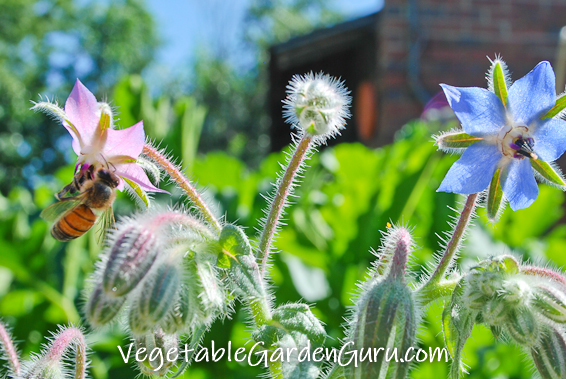| Back to Back Issues Page |
 |
|
Under the Arbor Issue 27 April 21, 2022 |
~ Abundance and Love in the Garden ~Earth and nature are inherently abundant. Sunshine flows freely into plants, who use its energy to transform carbon and water into food for those of us who aren't green. Gardening taps us into this lifeline between heaven and earth, a lifeline that is strengthened and widened by being used. Caring for the soil, the plants and the whole web of life that makes up a garden, exercises not just the body, but the heart. I've heard the Sufis say that Love is not a feeling - it is the greatest Power in creation. When we drop into our hearts, really drop in, we can see the divinity of life in every flower, every bee. When we put ourselves in the position of gardener, nurturer of life, caretaker and protector of the miraculous lifeline to heaven, we engage our heart. "Perfect Love casts out fear" because there ain't room in there for both.
Gardening in Times of "Scarcity" (Thinking)Growing food used to be something almost everyone did, and something everyone knew how to do. But times have changed, and while many people have a backyard vegetable patch, only a few produce a significant amount of their annual caloric needs from their little plots or raised beds. Small gardens are wonderful, and the VGG website exists to support you in whatever vegetable gardening endeavors serve you best.But if you're starting to feel a yearning to take on more responsibility for stewardship of life - yours and the planet's - consider relearning what our ancestors knew about tapping into the lifeline. To grow more and more of your own food is not only personally empowering, it is an excellent way to bring more nurturing, calming, loving energy into a world which sometimes seems to have misplaced it. The article Survival Gardening gives a good overview of what's involved, and leads out to links and resources that can support your journey. That said, I'd like to add here that "self-sufficiency" and "independence" are actually fallacies - because "interdependence" is the truth for all of life. It is in that interdependence that our abundance and survival are assured. We need the microbes, the bees, the worms… and each other. Germinating CarrotsThe article "Transplanting Carrots" gets more hits than anything else on my website(!), which is funny because carrots are so root sensitive that transplanting virtually always results in forking. I think what people are really searching for is a solution to carrot germination problems.Carrot seeds are super tiny, and need a very, very fine seedbed to to germinate well and grow without root-forking. They also (like all seeds) must not dry out until they have sprouted a root long enough to anchor themselves in the soil. One technique that solves both problems at once is to "chit" the seeds first (which means pre-sprouting), combine them with very finely-sifted compost, and then spread the compost/seed mix down a shallow furrow made in a row or bed.
Instructions for Successfully Germinating CarrotsSTEP ONE Water your soon-to-be carrot bed. The next day, prepare as fine a seedbed in it as you can, removing rocks, clods, clumps, weeds, etc. Gently water again, and the next day, when the soil is about as moist as a wrung-out sponge, go over it again to make it even more smooth and fine.STEP TWO Put as many seeds as you want in a glass jar and cover with water for about 8 hours. About ¼ tsp of seed should be enough to seed about 30 feet of row. Don't soak 'em much longer than this or you can drown them. After 8 hours cover the jar with cheesecloth, a piece of fine windowscreen, or other material that will allow you to drain the water while retaining the seeds. I use a very fine-mesh nylon tea infuser. Let them dry just enough that they don't stick together and can be mixed with compost (in the next step) without clumping. STEP THREE Take about 2 quarts (or liters) of finished compost (fully broken down), and rub it through a ¼" to ½" mesh hardware cloth screen to make a nice fine compost. (Don't have a screen? Get creative... or maybe use some very fine potting mix instead). Mix in about a cup of finely-screened garden soil, add your chitted carrot seed, and very gently mix it all together as evenly as you can. STEP FOUR Make a shallow furrow down your bed. Evenly spread the compost/soil/seed mix down your furrow, no more than about ⅓ to ½" deep. Check the bed at least twice a day, and keep it evenly moist by watering with a very fine spray until the roots are well-established.
DedicationVegetable Garden Guru is dedicated to the renewal of regenerative, sustainable, organic vegetable gardening around the world. May we become gardeners of healthful, nutrient-dense food, careful stewards of soil, and may the plants we tend remind us to always keep growing toward the Light.
|
| Back to Back Issues Page |

